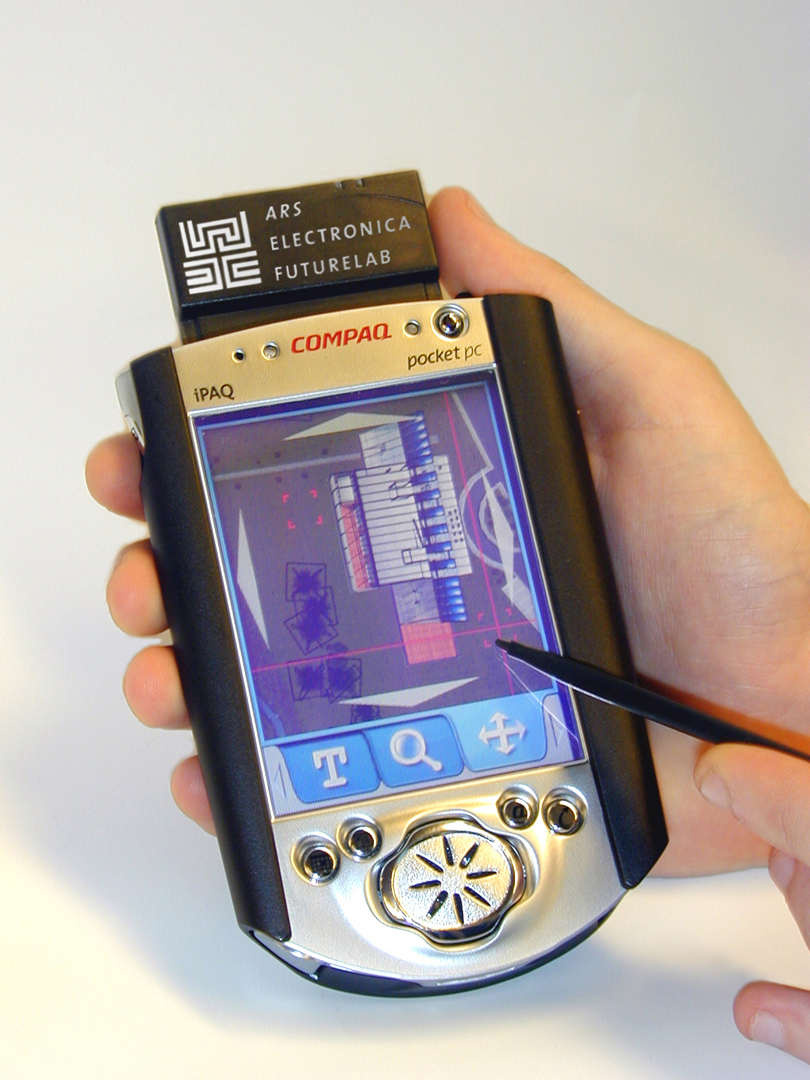“ARS BOX with Palmist” by Hörtner, Lindinger, Praxmarer and Riedler
Conference:
Experience Type(s):
E-Tech Type(s):
Entry Number: 64
Title:
- ARS BOX with Palmist
Organizer(s)/Presenter(s):
Description:
Abstract
The ARS BOX is a projection-based (cave-like), PC-based VR system. It significantly reduces the time and money needed to develop and present Immersive Virtual Environment (IVE) applications while simultaneously expanding the options available compared to similar systems. A handheld PC serves as its interaction interface, making possible numerous innovative applications.
1 Introduction
For several years, one of the primary focuses of the Ars Electronica Futurelab’s work has been the development of VR systems based on low-cost gaming technology both in terms of software (e.g. the use of game engines) and hardware (e.g. the use of interface devices, graphics adapters, etc). In this context, a huge number of tools and products were tested, and requirements were established in order to develop, use and improve applications in the field of art, research and technology. The chief motivation for taking up this field of research has been the steadily growing demand for affordable VR solutions for specific tasks.
2 The Palmist
The Palmist represents the effort to exploit the possibilities created by the use of a tracked handheld PC with wireless network access instead of conventional interfaces. It offers wireless mobility for the user that, in our view, increases the immersion of the user. Plus, the 2-D paradigm is much better for presentation of data like values and long texts and increases the usability of IVEs. This raises many new prospects for interaction with VR devices and VR applications. Last but not least, the Palmist is an ‘intelligent’ device, which means it’s a computer whose capabilities can be expanded and achieve the full functionality attainable by the software. Our software framework (FATE) utilizes functionality for the handheld PC interface in the fields of rapid prototyping, design-on-the-fly, advanced navigation mechanisms for vast IVEs, control of the IVE, new interaction possibilities for simulation and CAD applications. We have developed several demo applications in order to demonstrate the functionality of FATE.
3. Conclusion
Current IVE applications, especially in the fields of industry, simulation and architectural visualization, suffer from the restricted interaction possibilities afforded by ordinary haptic interaction devices such as data gloves, wands, etc. To overcome these deficiencies of ordinary interaction devices, we launched the Palmist project to come up with an ‘intelligent’ interface for the ARS BOX. The idea is to have an easy-to-use interface that offers expandable capabilities and doesn’t decrease user mobility to ensure unencumbered immersion.
The general aim of our work is to facilitate access to VR applications for designers and users, and at the same time to pave the way for new or improved applications in a wide variety of fields. The presentation within the Emerging Technologies Section is meant to signal that elaborate VR systems are no longer necessarily associated with extremely high costs. Through the use of the Palmist interface, we aim to demonstrate that a combination of pre-existing consumer hardware and innovative (software) approaches can yield results that are in some instances true breakthroughs.
Keyword(s):
- virtual environment
- device
- interface
- commodity hardware





